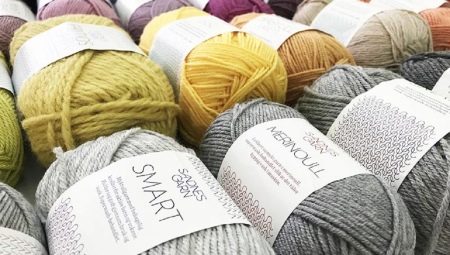Not very experienced needlewomen and just buyers may face the problem of choosing a product from mohair or angora. At first glance, they are similar. But only in appearance: both of them are very fluffy. In fact, these varieties of yarn have nothing in common.
History reference
Confusion lasts for a long time because of the name. Since the 19th century, Turkey has been famous for breeding Angora goats for the sake of obtaining very thin and expensive wool, which they began to call Angora.
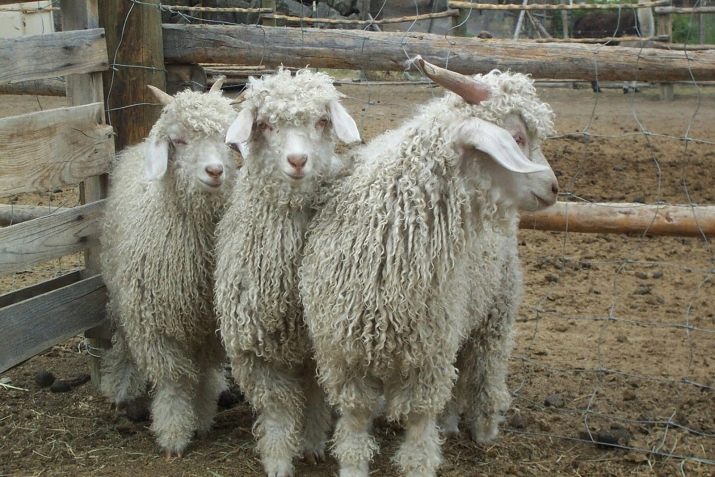
At the same time, an Angora rabbit appears in China. And the Chinese are beginning to breed it, and the resulting cheaper wool, respectively, is also called angora. Behind this fiber, the name of angora has remained so far.

But the Turks, in order not to confuse buyers, changed the name of their high-quality material to mohair.
What is the difference between yarn?
The main specific feature of both types of yarn is fluffy fiber. In mohair, it is distinguished by mechanical strength. In Angora, the fluff is smoother and silky, it is more difficult for him to stay in the finished thread. Therefore, the content of angora in the composition of the yarn is usually made no more than seventy percent and it is necessary to give strength it is mixed with acrylic, polyamide or nylon.
Absolute angora almost never occurs. For naturalness, manufacturers mix it with merino wool, which makes products from such yarn more durable and wear-resistant.
Sometimes you can find the composition of angora with mohair or silk. Such threads are very warm and durable, keep their shape perfectly. True, they are very expensive. They can already be classified as elite.
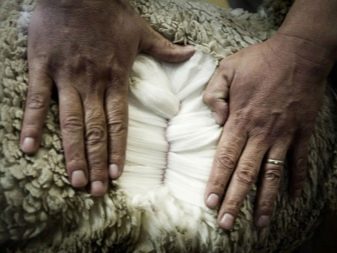
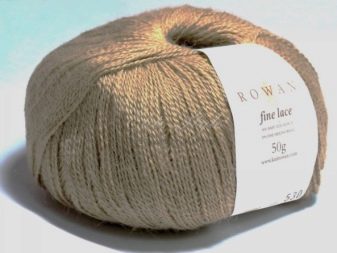
Different yarn and the length of the pile.Use in the production of pile with short hairs - this is such an easy way to reduce the cost of yarn. The material for the manufacture of which a long pile is used is better and more expensive (the average length is 6-12 cm, but can reach 50 cm).
Natural Angora will not create abundance in the color palette. In nature, white coat is most often found. After all, mostly rabbits, from which fluff is taken for its production, are albinos. Less often, but still gray and black individuals are found.
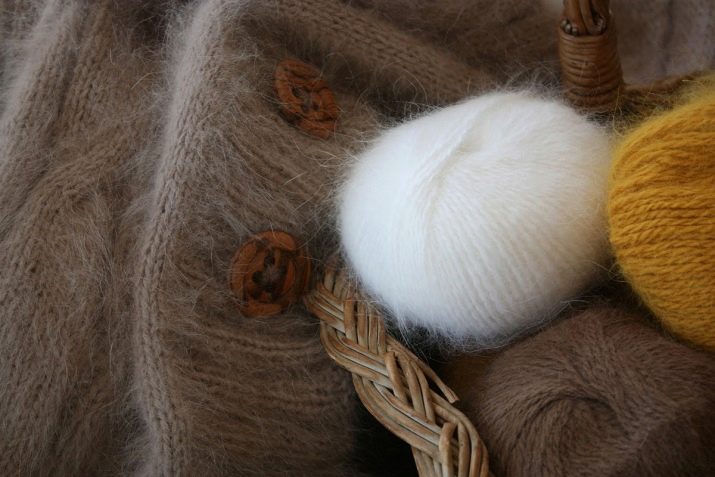
Woolen yarn lends itself to even and high-quality dyeing, and colored yarn is found in a fairly wide range.
The main pros and cons
Among needlewomen, yarn from angora is very popular. We list the main advantages of this material:
- softness and tenderness of the yarn make it pleasant to the touch;
- naturalness and hypoallergenicity of the coat;
- fluff has water repellent properties;
- lightness and bulk creates an economical thread consumption, which is beneficial when knitting;
- low thermal conductivity of the yarn is used for the manufacture of very warm products that warm and retain heat;
- It is worth noting the health benefits of Angora wool for diseases such as arthritis and osteochondrosis, when dry heat treatment is necessary.


Despite the huge number of advantages of this unique yarn, it has some disadvantages.
- In addition to the high price, they note some moodiness in leaving. Products from a fluffy Angora rabbit cannot be machine washed: only with your hands or dry cleaning. For cleaning use only mild detergents for woolen things. Dry horizontally straightened only.
- Another significant drawback is that it climbs. In the sock, the villi gradually fall out of the thread and stick to other clothes and furniture. The reason is the inability of the fluff to firmly establish itself on the basis of yarn. And this process is irreversible, it is impossible to prevent it.
- Somewhat unpleasant is the tendency of fluff to fall off, because it spoils the look of the finished product in a sock. But they learned to use this same property with success in the production of high-quality felt, so that from the minus it became a plus.
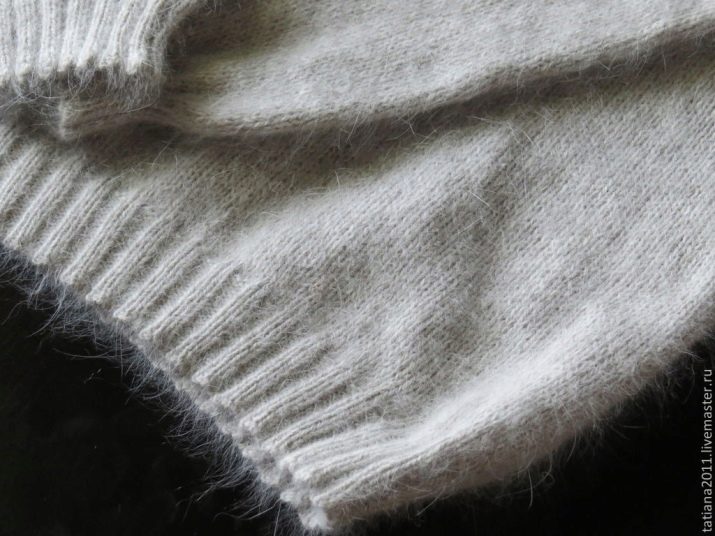
Thread selection
The process of creating a knitted product always begins with the selection of yarn. The success of knitting and the final result directly depend on the correct choice of thread. In their diversity, it is not so easy to navigate the Internet and shop windows. A small review will help beginner needlewomen to decide.
- Yarn art angora ram has the composition: angora - 40%, acrylic - 60%, 100 g - 500 m. It often happens with lurex. The thread is of medium quality, does not tolerate washing, quickly rolls under the armpits and on the sleeves. Squeaky to the touch, like low-quality synthetics.
- La boule de neige - 100% Angora, 500 m per 100 g. Great, very fluffy yarn. Great for crocheting. He sits heavily.
- Biagioli modesto - 80% of angora, polyamide - 20%, 850 m per 100 g. A thin, homogeneous thread, evenly twisted, does not stratify, ideal for knitting.
- Pecci filati - angora - 70%, 30% - wool, 700 m per 100 g. Excellent for machine knitting. It does not deform in products, it gently pushes.
- Cariaggi - 90% of angora, 10% - polyamide, 500 m / 100 g. Can be knitted either manually or on a typewriter. The threads are specially processed and fluff only after washing.
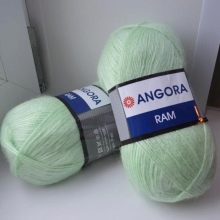
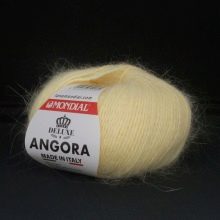
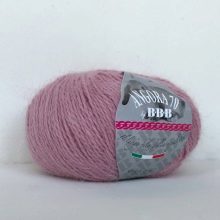
Features of bobbin yarn
I would like to talk in more detail about the features of threads on bobbins. They do not always look beautiful, and often look like ordinary sewing thread. It's all about special impregnation with a certain composition, which manufacturers use to give smoothness. This makes it possible to use bobbin yarn on knitting machines. So it is less damaged and clings to the production of knitwear, hiding its true nature.
This must be taken into account when calculating the loops. The bound sample must be washed and dried several times.That is why such Italian yarn that is so common now requires repeated washing, after which it will be very different from its original appearance and texture: it will become soft, plastic and fluffy.
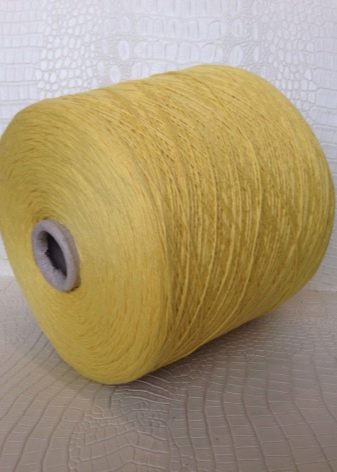

Therefore, you must carefully approach the choice of thread. Yarn from Angora is very well established among knitters and has excellent reviews. Experienced needlewomen especially emphasize the advantages of white Italian threads with Lurex. They are very economical, have very little expense, but high cost. The things connected from them are not only soft, but also unusually light, almost weightless and very elegant.
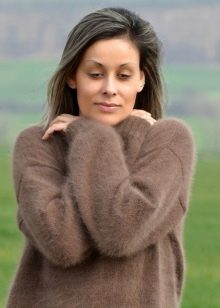
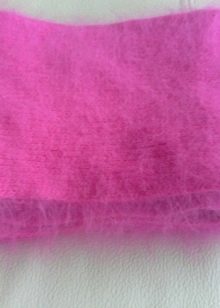
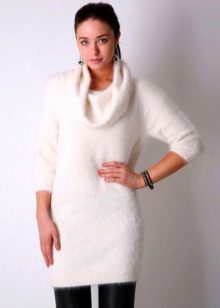
An overview of Angora yarn, see the video below.
